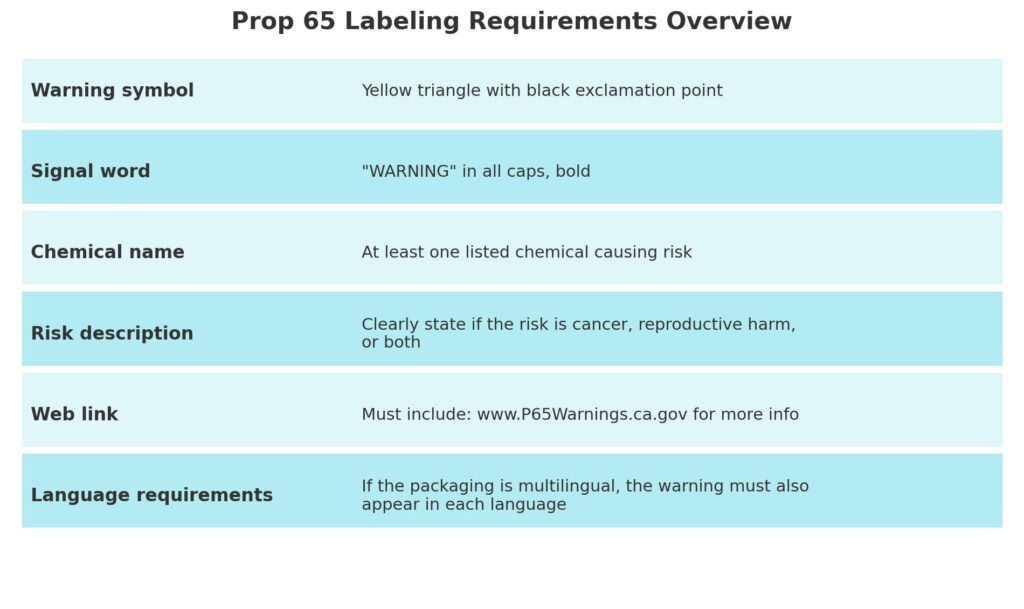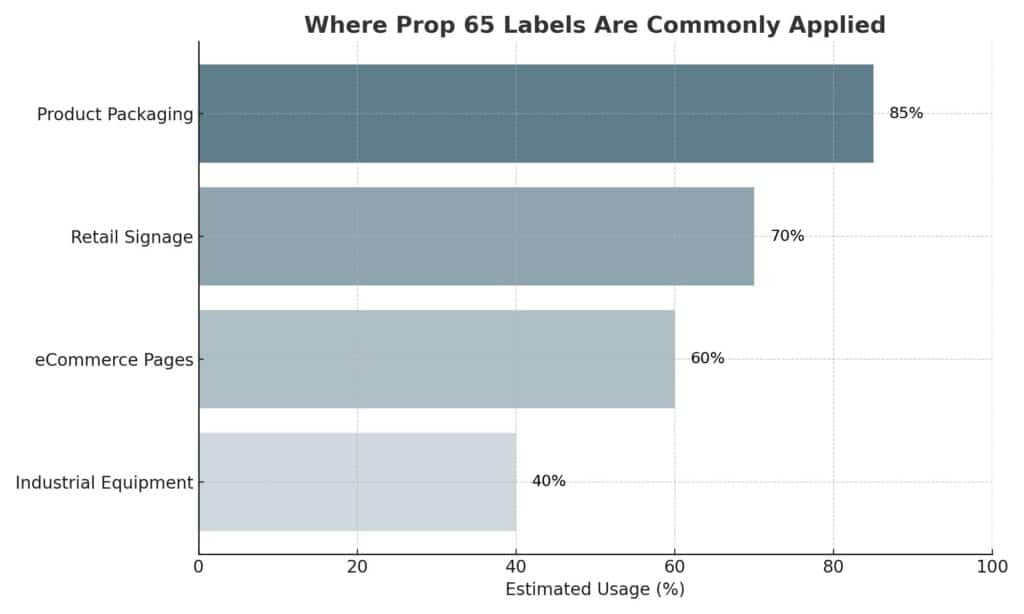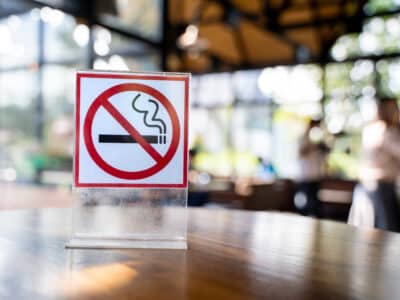What Are Prop 65 Labeling Requirements?
Prop 65 labeling requirements are California regulations that mandate businesses to warn consumers if their products contain chemicals known to cause cancer, birth defects, or other reproductive harm. These warnings must follow specific content, design, and placement rules outlined under California Proposition 65 law.
What Is Proposition 65?
Proposition 65, officially known as the Safe Drinking Water and Toxic Enforcement Act of 1986, is a California law that requires businesses to warn consumers if their products expose them to chemicals known to cause cancer, birth defects, or other reproductive harm. It’s centered on transparency—helping people make informed choices about the products they use.
What Triggers the Need for a Prop 65 Label?
Businesses must include a Prop 65 warning label on their product if any of the following are true:
- The product contains one or more chemicals listed under Prop 65
- The expected exposure level exceeds the state’s “safe harbor” limits
- The business cannot demonstrate that the exposure level is below the threshold
This applies to physical products, packaging, signage, online listings, and more.
What Does a Compliant Prop 65 Label Look Like?
Here’s a visual breakdown of the standard Prop 65 label design:
Label Must Include:

Short-Form vs Full Warning: What’s the Difference?
Short-form warnings can be used on small products, but the rules changed in 2025. Here’s a comparison:
| Format | What’s Required | When to Use It |
| Full Warning | Signal word, chemical name, risk, web URL | Standard products with full packaging |
| Short-Form | Now must also include a chemical name | Products with limited label space |
Update: Businesses have until 2028 to comply with new short-form regulations.
Where to Place the Label
Your label should appear:
- On the product packaging
- Directly on the product if no external packaging
- Online if you sell through eCommerce (must be clearly visible before checkout)
- On printed catalogs if applicable

Common Use Cases for Prop 65 Labels
The chart below shows the estimated percentage of Prop 65 label usage across product types based on observed industry applications.

- Product Packaging: Highest usage due to frequent consumer exposure
- Retail Signage: Used for public-facing items
- eCommerce Pages: Legally required for online product listings
- Industrial Equipment: Needed in environments with chemical exposure
Why Labels Matter for Compliance and Trust
Prop 65 labeling is more than just a regulatory checkbox—it’s a way to show transparency and build confidence. Whether you’re selling in stores or online, having the correct Prop 65 warning labels is part of staying legally compliant and customer-aware.
If you’re looking for Prop 65 label solutions, you’ll find multiple formats and adhesive types in our Prop 65 label collection, designed for clarity and compliance.
Frequently Asked Questions
What are Proposition 65 warning labels?
They alert consumers to potential exposure to chemicals known to cause cancer, birth defects, or other reproductive harm, as required by California law.
Which products need Prop 65 warning labels?
Products containing listed chemicals—including electronics, cosmetics, food packaging, and tools—require a warning if exposure exceeds safe levels.
What’s the difference between short-form and long-form labels?
Short-form labels are designed for small packages but now require chemical names. Full labels offer complete risk info and are used on larger packaging.
Do small businesses need to comply?
Businesses with fewer than 10 employees are typically exempt from Proposition 65 requirements.
Where can I find the official list of Prop 65 chemicals?
You can view the full list at the OEHHA official website.




